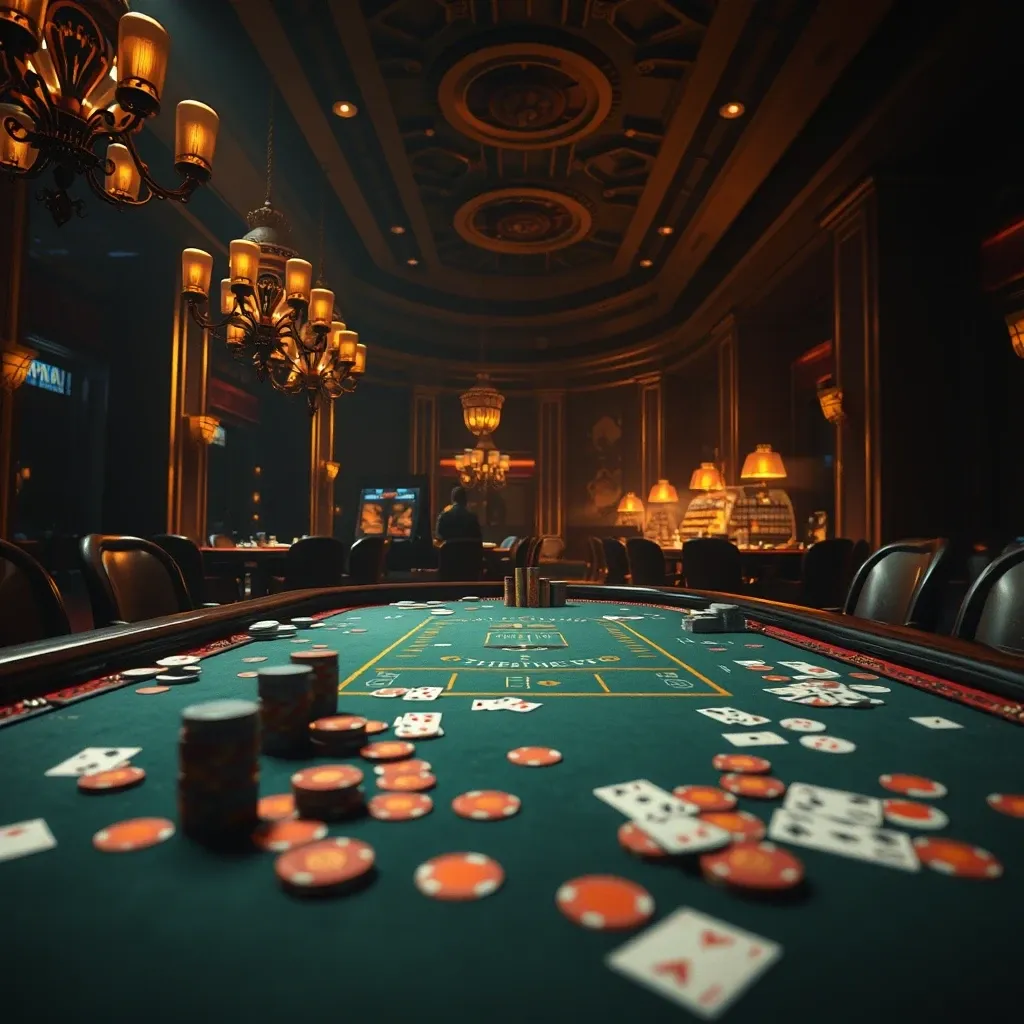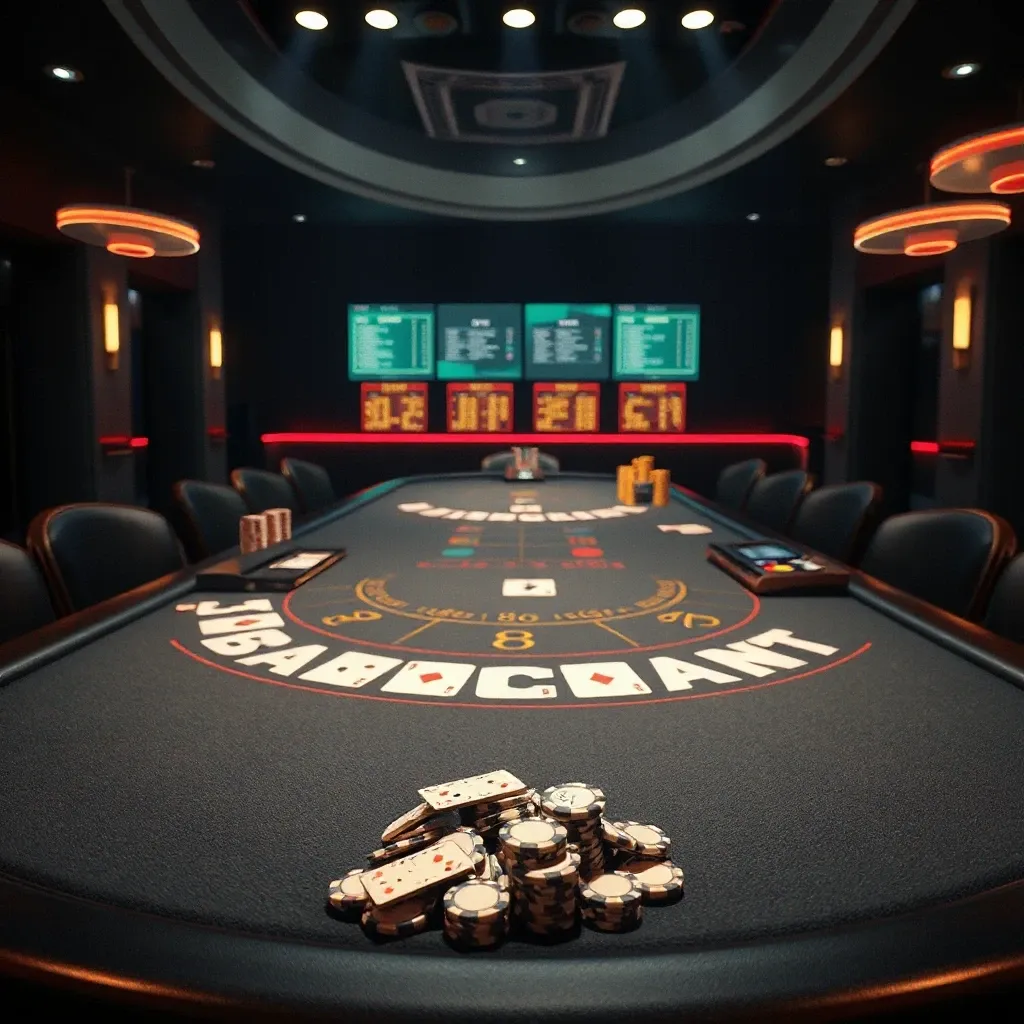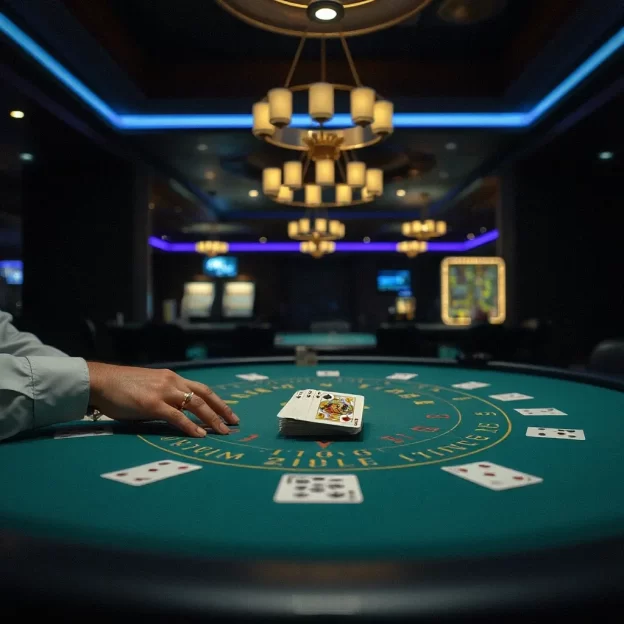Introduction: Can You Really Beat Blackjack?
Blackjack, the alluring casino game, has captivated millions with its promise of fortune. The question that lingers in every player’s mind is: can blackjack be beaten? As someone who’s spent years immersed in the world of casino games, I understand the burning desire for a definitive answer. The truth, however, is more intricate than a simple yes or no.
Let’s face it, casinos aren’t in the business of handing out free money. Blackjack, unlike many other casino games, isn’t solely based on luck. Skill plays a significant role, opening the door to the possibility of turning the tables on the house. This article will dissect the mathematical underpinnings of blackjack, explore the concept of advantage play, and delve into the practical realities of attempting to beat the game. With approximately 48.7 million adults in the United States engaging in casino games like blackjack, understanding the odds and strategies is more relevant than ever. Prepare to have your perceptions challenged as we uncover the truth about beating blackjack.
Blackjack Basics: Why It’s Different
Blackjack’s popularity stems from its simple rules and relatively low house edge. The core objective is to beat the dealer by having a hand value closer to 21 without exceeding it. Numbered cards hold their face value, face cards (Jack, Queen, King) are worth 10, and Aces can be 1 or 11, depending on which value benefits the hand most.
Players make decisions on each hand, choosing to “hit” (take another card), “stand” (end their turn), “double down” (double their bet and take one more card), or “split” (separate pairs into two hands). Another option, “insurance,” becomes available when the dealer shows an Ace, offering a side bet that the dealer has blackjack.
Payouts are typically 1:1 (even money), except for a blackjack (an Ace and a 10-value card), which pays 3:2. The dealer, however, operates under fixed rules, usually hitting on any hand valued at 16 or less and standing on 17 or more, including a “soft 17” (an Ace and a 6).
Compared to many other casino games, blackjack offers a lower house edge, meaning the casino’s advantage is relatively small. This edge can be further minimized by employing a “basic strategy,” a set of mathematically optimal plays for every possible hand combination. Mastering basic strategy significantly improves a player’s odds, making blackjack a game of skill as well as chance. While other casino games rely almost purely on luck, blackjack allows informed players to actively influence their outcomes.

Card Counting: Debunking Myths and Explaining Systems
Card counting isn’t about having a photographic memory and recalling every single card dealt. It’s more about estimating the ratio of high cards (10s, face cards, Aces) to low cards (2-6) remaining in the deck. The premise? When there are more high cards left, the odds shift slightly in the player’s favor. This is because high cards improve your chances of hitting a blackjack and increase the dealer’s likelihood of busting.
Let’s clear up a big misconception: card counting is not illegal. Casinos are private establishments, and they have the right to refuse service to anyone. If they suspect you’re counting cards, they might politely (or not so politely) ask you to leave. Think of it like this: the casino is running a business, and they aren’t fond of people using mathematical strategies to swing the odds.
One of the most popular and easiest systems to learn is the Hi-Lo system. Each card is assigned a point value: 2-6 are worth +1, 7-9 are worth 0, and 10-Ace are worth -1. As cards are dealt, you keep a “running count” by adding or subtracting the point values. A positive running count means there are more high cards remaining. To get a more accurate picture, especially in multi-deck games, you convert the running count to a “true count” by dividing the running count by the estimated number of decks remaining. For example, a running count of +6 with two decks remaining would be a true count of +3.
The true count is your betting guide. A higher positive true count suggests that the odds are in your favor, so you can increase your bets. A negative or low count means the odds favor the house, and you should bet the table minimum or even sit out a hand.
Advanced Card Counting Techniques
The Hi-Lo system is a great starting point, but the world of advantage play goes much deeper. Some players employ more complex “point count” systems that assign different values to different cards, offering a slightly more accurate assessment of the deck composition. There’s also “Wonging,” named after Stanford Wong, which involves observing a game without playing and only jumping in when the count becomes favorable. This requires patience and bankroll, to travel between casinos, but it can add a percentage point of edge.
Team play involves multiple players working together: One or more “spotters” signal to the “big player” when a table’s count is high, then the big player comes in and bets big. It’s rumored that Casinos have the ability to immediately detect players that apply team play. This requires a level of coordination and communication that is challenging to execute and easily detectable by casinos. While the basic concept of team play has been around for decades, popularized by groups like the MIT Blackjack Team, its effectiveness in today’s casino environment is debatable. Modern surveillance technology has made it much easier for casinos to identify and track players who are working together.
Beyond Card Counting: Alternative Strategies
While card counting is widely known, skilled blackjack players explore various advantage play techniques to shift the odds in their favor. These methods, demanding keen observation and mental agility, can provide an edge, but also walk a fine line between skillful play and unethical behavior.
Shuffle tracking involves observing the dealer’s shuffle patterns to predict where specific sections of the deck will be placed. By estimating the location of high-value cards, players can adjust their bets accordingly. This technique is legal as it relies on observation and calculation, not manipulation.
Ace sequencing takes shuffle tracking a step further by specifically tracking the order of aces within the deck. Knowing when an ace is likely to appear allows players to maximize their bets and increase their chances of hitting blackjack. Like shuffle tracking, ace sequencing is considered a legitimate strategy.
Hole carding, on the other hand, is where a player illegally glimpses the dealer’s down card. Knowing this information provides a significant advantage, but it’s considered cheating and is strictly prohibited in casinos. While effective, the ethical and legal ramifications make it a risky proposition.
These alternative strategies offer a glimpse into the complex world of advantage play in blackjack. While card counting remains a popular technique, these methods demonstrate the diverse ways players attempt to gain an edge against the house.
The Real-World Challenges: Risk, Camouflage, and Casino Countermeasures
Advantage play isn’t just about mastering the math; it’s about navigating a complex environment where the house is always watching. Successfully exploiting casino games requires a deep understanding of the practical challenges, risks, and countermeasures employed by casinos to protect their profits.
Casinos are not oblivious to card counting and other forms of advantage play. They employ various techniques to identify and deal with suspected players. This can range from increased scrutiny by pit bosses and surveillance teams to subtle changes in shuffle points designed to disrupt counting strategies. A common tactic is “backing off,” where a player is politely (or not so politely) asked to stop playing a particular game. In more severe cases, a player might be “trespassed,” meaning they are banned from the property altogether.
To mitigate these risks, effective camouflage is essential. This involves more than just wearing a disguise. It’s about blending in, varying bet sizes to avoid drawing attention, acting like a recreational player, and avoiding any predictable patterns that could signal advantage play. For instance, sometimes a change of clothes or a different way of ordering a drink can help to throw off suspicion.
Beyond the watchful eyes of the casino, the risk of ruin looms large. Variance in gambling can be brutal, and even with a statistical edge, a player can experience significant losing periods. A sufficiently large bankroll is crucial to weather these storms and avoid being wiped out before the long-term advantage can materialize. Bankroll management is as important as the technical skill.

Bankroll Management: A Critical Key to Success
Profitable Blackjack isn’t just about knowing the rules and basic strategy; it’s about mastering bankroll management. It’s the bedrock upon which long-term success is built, allowing you to weather the inevitable storms of variance and emerge victorious. Variance, that unpredictable beast, can deliver strings of losses that leave you questioning your skills and sanity. Without proper bankroll management, even the most skilled player can be wiped out by a bad run.
One key concept is the risk of ruin – the probability of losing your entire bankroll. This risk is directly related to your bankroll size and the size of your bets. Betting too big relative to your bankroll is a recipe for disaster. The Kelly Criterion offers a mathematical approach to determining optimal bet sizing, aiming to maximize long-term growth while minimizing the risk of ruin. It’s a complex formula, but it highlights the importance of aligning bet size with your edge and bankroll.
Bankroll management also involves setting stop-loss limits. These are pre-determined thresholds at which you stop playing, regardless of how well or poorly you’re doing. Sticking to these limits is crucial for preventing tilt – that emotional state where rational decision-making goes out the window. I remember one particularly brutal session where I stubbornly chased my losses, ignoring my stop-loss limit. The result? A significantly lighter wallet and a valuable lesson learned. Discipline in bankroll management is just as vital as discipline at the Blackjack table. It’s what separates the casual gambler from the serious, long-term player.
Is It Worth It? The Time, Effort, and Potential Rewards
Diving into the world of advantage play in blackjack is like embarking on a treasure hunt. The treasure? Potentially significant financial gains. The map? A deep understanding of game theory, card counting techniques, and bankroll management. But is the “X” really where they say it is? Is the journey worth the sweat, the late nights, and the mental gymnastics?
Let’s be brutally honest: becoming a skilled advantage player is a serious time commitment. Forget casual dabbling; this requires dedicated study and practice. You’ll be memorizing basic strategy charts until they’re burned into your brain, mastering counting systems, and learning to disguise your play to avoid detection. Hours upon hours will be spent honing your skills, often before you even see a single profitable hand.
What about the potential rewards? Yes, consistent profitability is achievable, but it’s not a get-rich-quick scheme. Variance is a cruel mistress. Even with a positive expected value, you’ll experience losing streaks. Disciplined bankroll management is paramount. Without it, a cold run can wipe out your profits, leaving you back at square one.
There’s also the lifestyle to consider. Advantage play often involves long hours in casinos, dealing with smoky environments and sometimes unfriendly staff. It can be isolating, as you likely won’t be sharing your strategies with just anyone. And let’s not forget the ethical considerations. While not illegal, some casinos frown upon advantage play and may ask you to leave. This is a risk you need to acknowledge.
For some the thrill of outsmarting the house, the intellectual challenge, and the potential for financial freedom make it all worthwhile. But for others, the time commitment, the stress of variance, and the lifestyle tradeoffs might not be a good fit. Analyze yourself and decide if it is for you.
Conclusion: The Thrill of the Advantage
Blackjack, at its heart, is a game of calculated risks and strategic decisions. While luck undoubtedly plays a role in the short term, the beauty of blackjack lies in its potential for advantage play. This article has explored the various techniques, from basic strategy to card counting, that can shift the odds in your favor.
Becoming a consistently profitable blackjack player demands more than just knowing the rules. It requires unwavering discipline, a keen understanding of bankroll management, and the mental fortitude to weather inevitable losing streaks. The strategies outlined here, when mastered and applied correctly, offer a pathway to turning the tables on the casino.
Remember, the journey to becoming a skilled blackjack player is a marathon, not a sprint. Embrace continuous learning, hone your skills through practice, and always be aware of the inherent risks involved. The world of advantage play is challenging, but for those who are dedicated and prepared, the rewards can be substantial. So, take what you’ve learned, hit the tables (responsibly, of course), and may the odds be ever in your favor!
